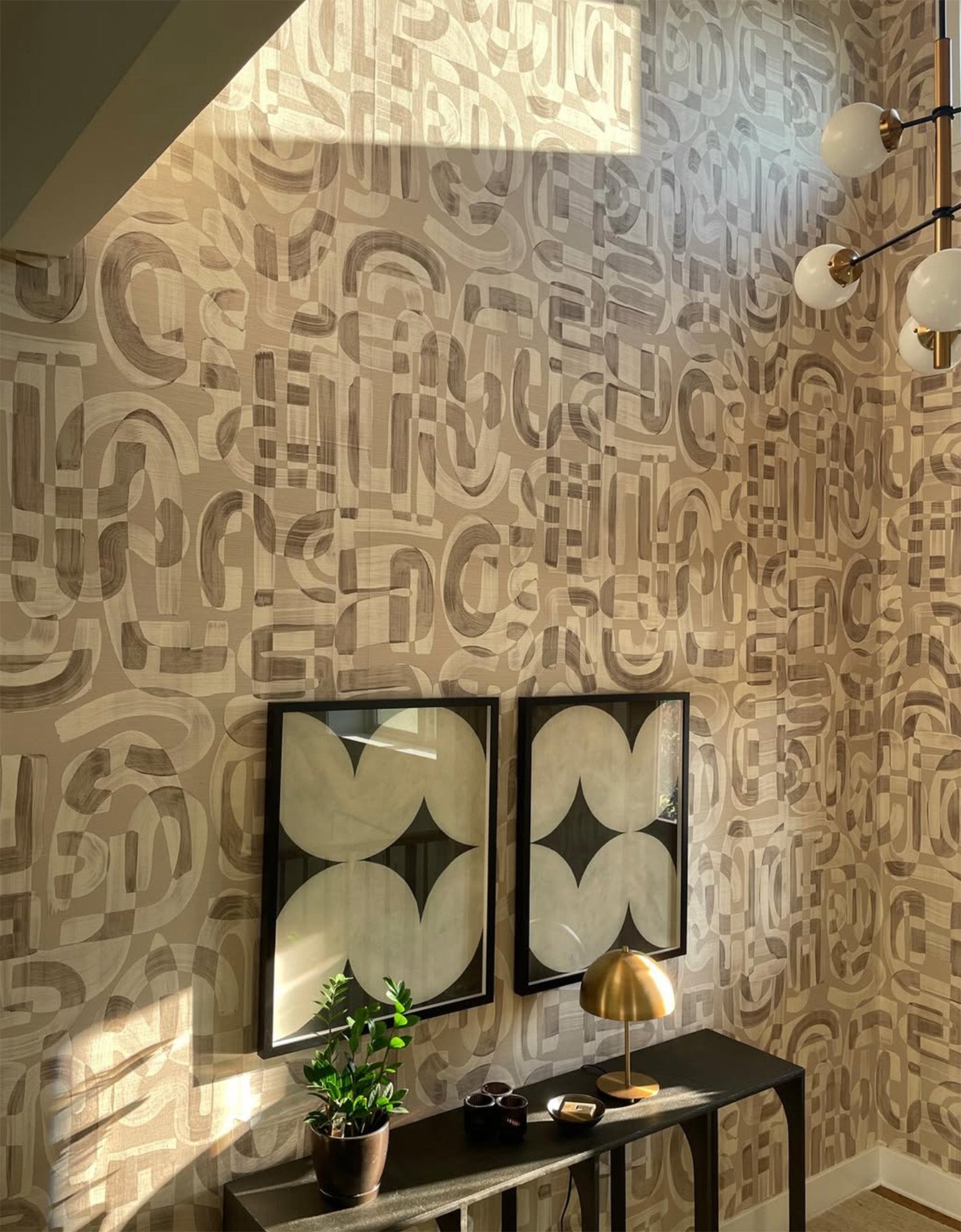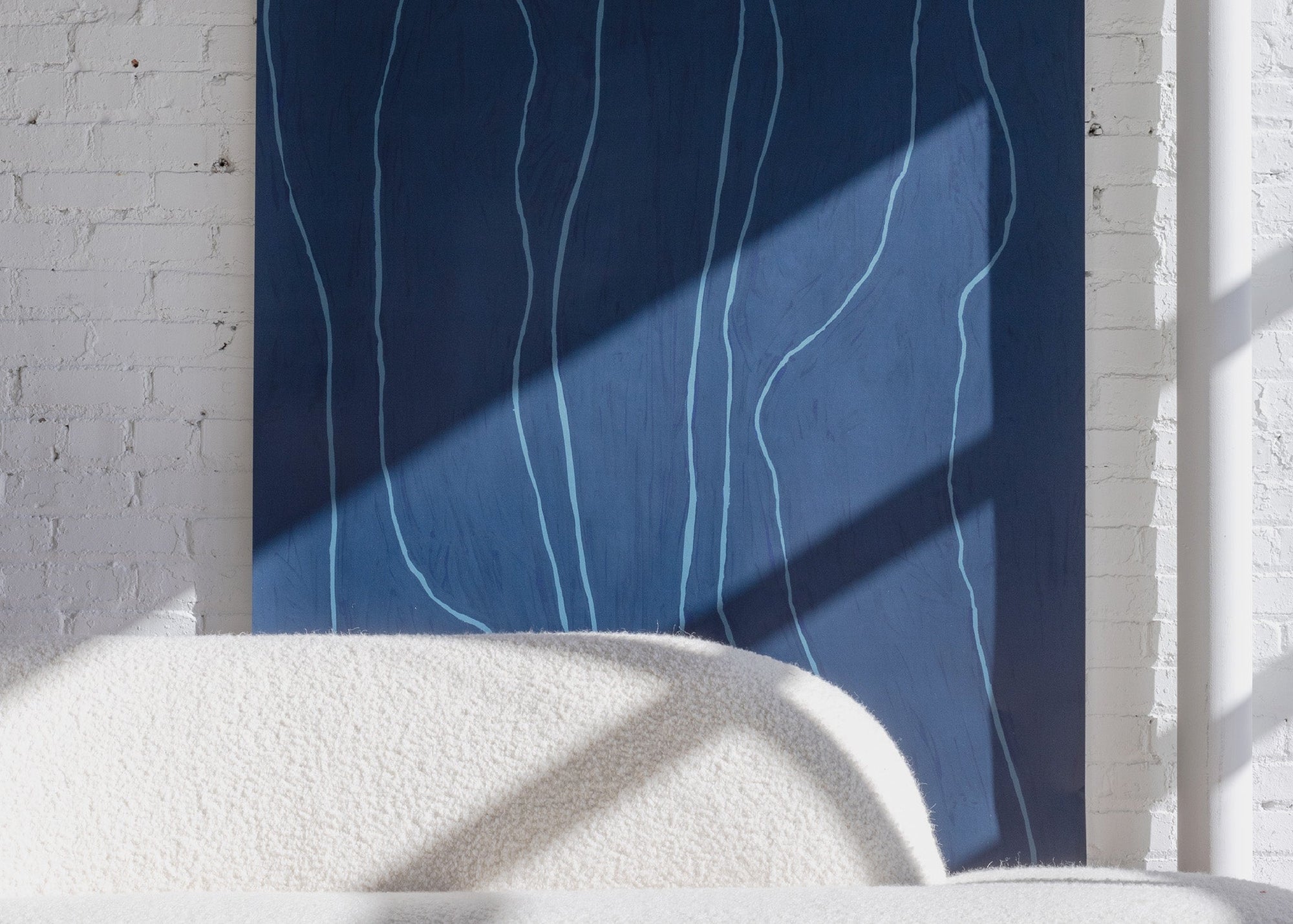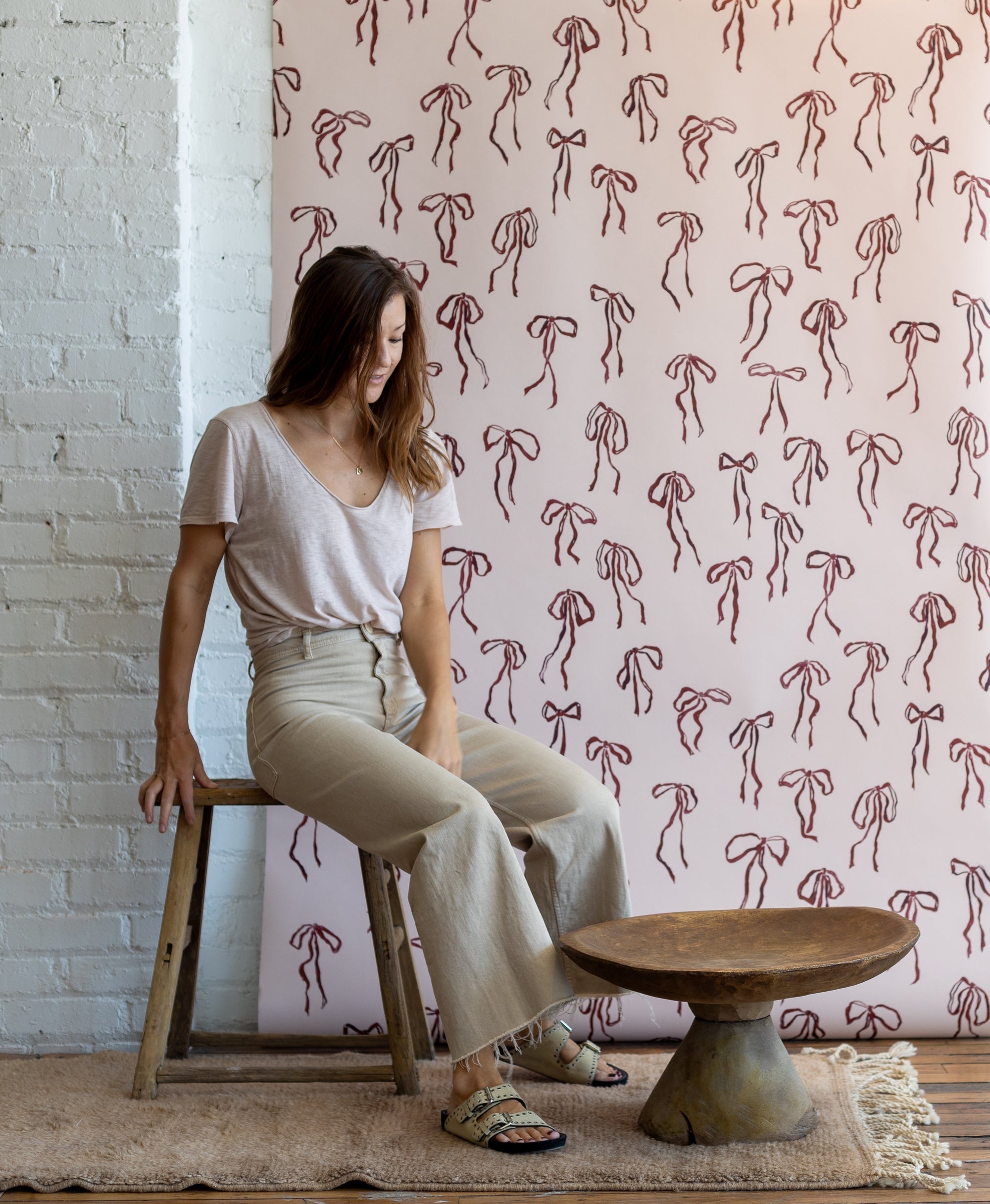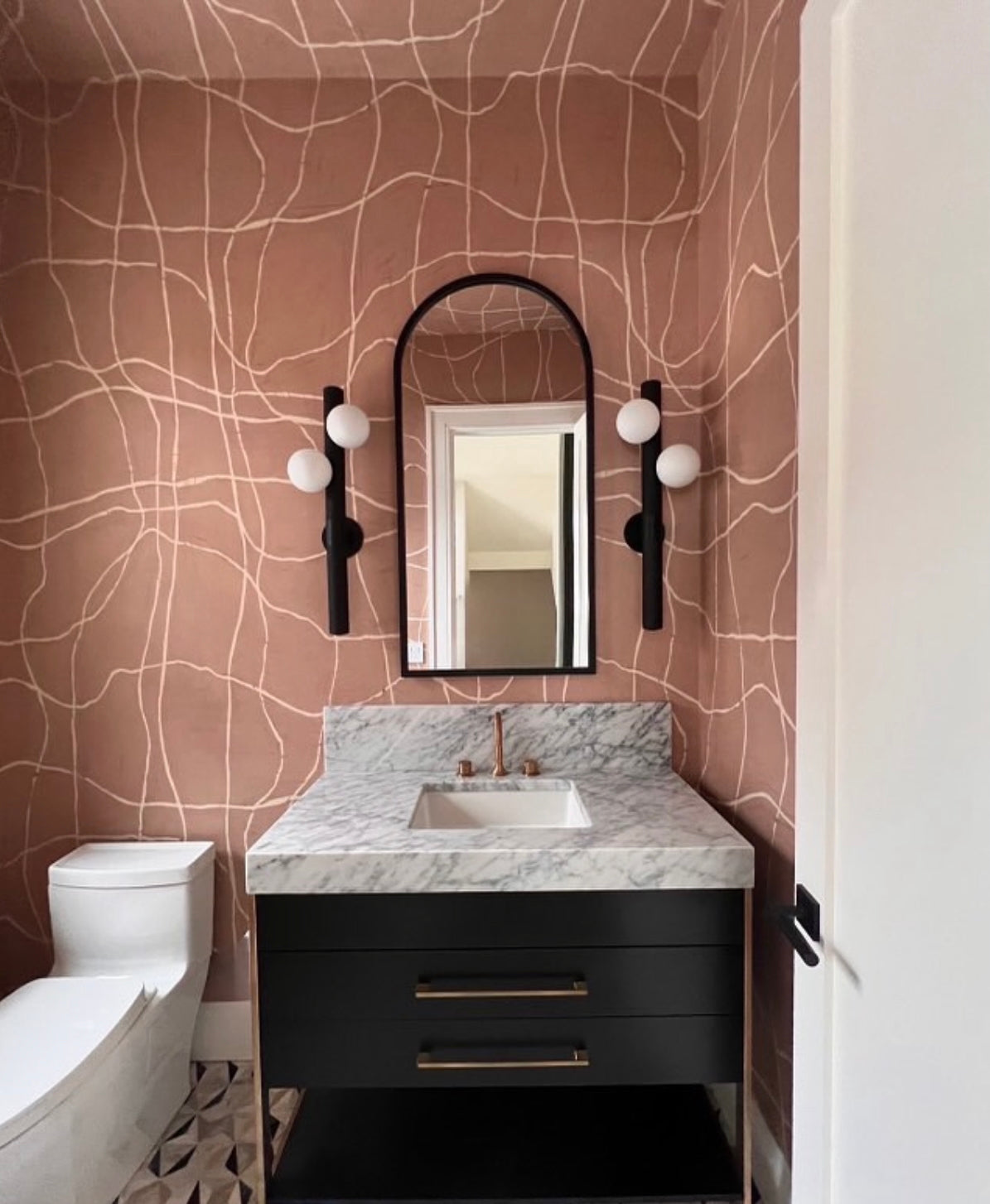Why Can I See Seams on My Natural Fiber Wallpaper?
At Poppy, a common question we get from customers is about the appearance of seams in natural fiber wallpapers. We’ll explain what you need to know and what to expect when specifying and installing grasscloth, silk, and linen wallcoverings on your project.
Natural fiber wallpapers offer elegance, warmth, and texture that transform ordinary walls into beautiful statement pieces. But it is important to be aware of what the seams will look like after installation and set expectations accordingly for these premium materials.
“Expectation is the mother of all frustration.”
– Antonio Banderas
Seams in Grasscloth Wallpaper
Visible seams in grasscloth wallpaper are not flaws but inherent characteristics of the material. Each roll of grasscloth is uniquely crafted from organic fibers, resulting in natural variations in texture, color, and weave. When these distinct panels are installed adjacent to one another, the transitions between them create visible seams where the fibers do not perfectly align.
Grasscloth wallpapers are harvested, dried, and woven natural grasses glued onto nonwoven paper backing. The grasscloth can then be further printed to imprint designs on the surface. This process and the irregularity of real dried grass means that each panel is entirely unique, contributing to the rich, organic aesthetic that gives grasscloth wallpaper personality.

The photo above shows installed printed grasscloth panels with an acceptable seam. You can notice it in the sunlight at the top of the image.
Silk and Linen Wallpaper Seams
While silk and linen wallpapers feature more refined weaves than grasscloth, they still exhibit visible seams. Silk and linen fibers are smaller and occasionally more uniform than grasscloth, but will still create a noticeable seam, even after a successful installation. Rather than detracting from the overall appearance, these subtle transitions enhance the sophisticated, textured look of your walls, adding visual interest and depth that cannot be achieved with traditional printed paper wallcoverings.

The photo above is a close up shot of solid linen panels with an acceptable seam running from bottom left edge to top right edge.
Knowing What to Expect
At Poppy we believe in establishing clear expectations for our customers. Many people assume all wallpaper is the same, because they are most familiar with traditional paper, and are not aware that natural fiber wallcovering and luxury materials are not all the same. Understanding that silk, linen, and grasscloth wallcoverings will display visible seams prior to the purchase and during the research and sourcing phase can help prevent surprise and frustration after purchase.
A realistic understanding of how the seams of these materials appear when then the installation is complete is key to being satisfied with the purchase.
“If you think it's expensive to hire a professional,
wait until you hire an amateur”
Hire the Installation Pros
While seams are an inherent feature of natural wallcoverings, their appearance can be significantly influenced by installation quality. We always suggest searching your local area for qualified paper hangers by using this tool from the Wallcovering Installers Association.
They have a great database of certified installation professionals who specialize in various materials. Further refining your search results to filter for installers with accreditation in textiles and fabrics and/or Boutique and Designer Wallcoverings can lead you to the best installers for these types of wallpaper products.
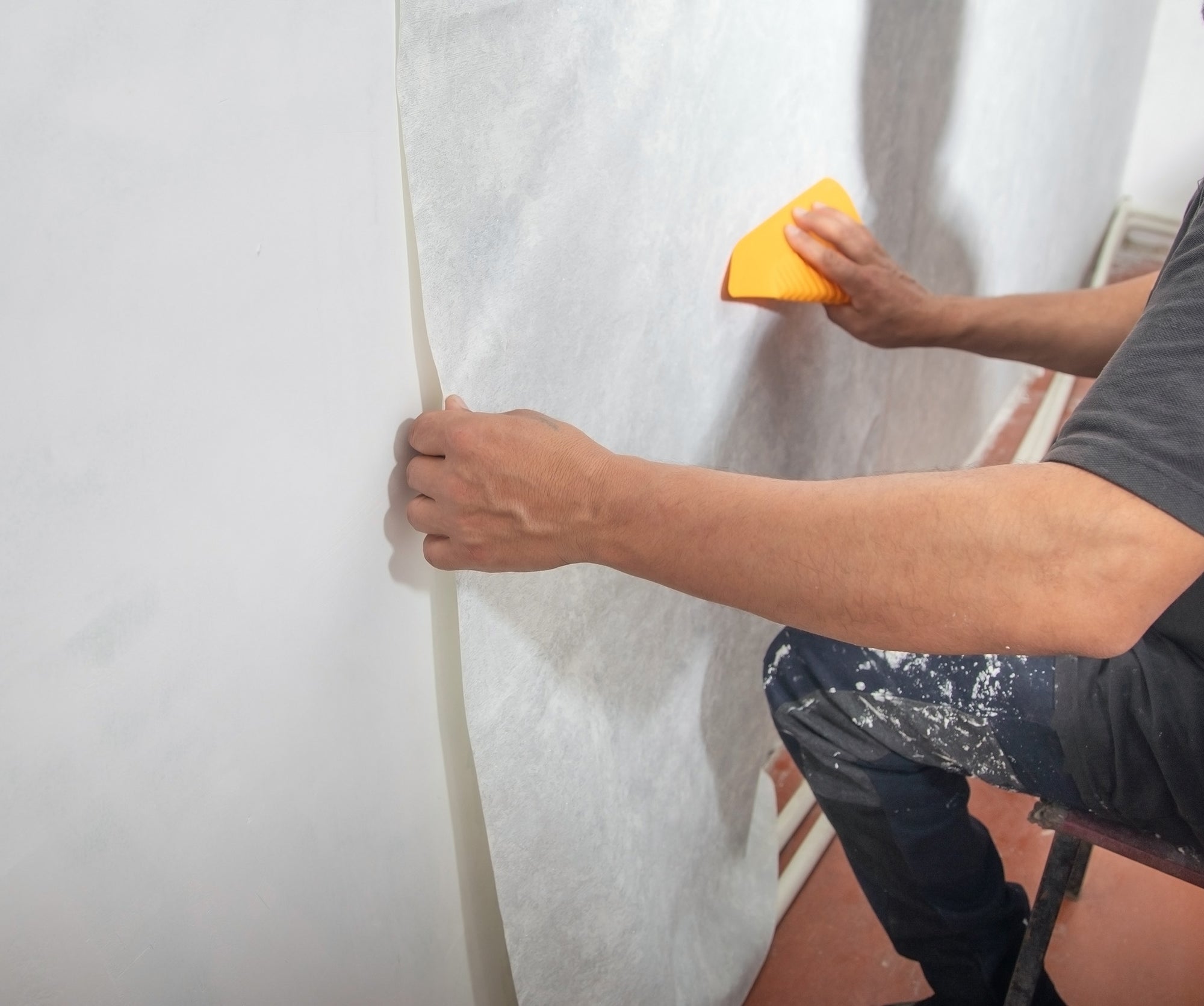
3 Strategies Pro Installers Use to Minimize Seams
Wall Preparation
Professional installers can prepare walls with primer matching the wallcovering's base color before installation. This preparation ensures that any minimal gaps between panels remain visually unobtrusive. For darker wallcoverings, installers may employ the "banding" technique—applying color-matched paint specifically to areas where seams will fall.
Edge Treatment
For darker grasscloths and natural fibers, installers can apply color to the edges of each roll before installation. This approach creates more cohesive transitions between panels. The paint covers the white edge of the nonwoven backing paper making the seam less noticeable.
Specialized Coloring Techniques
Post Installation, installers can also use watercolor markers along seams, followed by immediate wiping with a cloth. Applying color to adhere subtly to the wall and nonwoven paper backer, while wiping clean the marker from the wallpaper face, can result in less noticeable transitions.
Embrace Authentic Character
In design, there is growing appreciation for elements that showcase their handcrafted origins. The visible seams in grasscloth and natural fiber wallpapers communicate authenticity and craftsmanship, adding character to interior design projects.
Approaching projects with an understanding of how the seams will look in the real world after installation, can help with expectations and avoid frustration. Many find that the textural variations and subtle panel effects actually enhance their spaces, adding depth and visual interest.
Make the Right Choice for You
If your design preferences align with the wabi-sabi philosophy—appreciating beauty in natural variation—then grasscloth, linen or silk wallpapers from Poppy will make your wallpaper installation extraordinary . These materials provide exceptional warmth, texture, and sophistication, creating environments that balance luxury with organic comfort. And when installed properly by professionals, we believe that visible seams in natural fiber wallpapers represent signatures of authenticity that distinguish these exceptional materials from mass-produced alternatives, contributing to truly extraordinary interior spaces..
But, if visible seams are unacceptable or not a look you’re comfortable with, a selection of traditional non-woven wallpaper might be a better alternative. Having the knowledge to make an informed decision is the first step in deciding what's right for your next wallpaper project.
more from the poppy blog
Why Can I See Seams on My Natural Fiber Wallpaper?
At Poppy, a common question we get from customers is about the appearance of seams in natural fiber wallpapers. We’ll explain what you need to...
Introducing Sinuous Line Wallpaper
Sinuous Line—A Moroccan-Inspired Wallpaper by Poppy. Capture the warmth and artistry of Marrakech with colors reminiscent of Matisse, from celadon to deep sapphire. Reminiscing on...
Maker Monday: An Interview with Jennifer Hunt
We’re thrilled to share that we’ve been featured in Aspire Design and Home’s Maker Monday series, shining a spotlight on Jennifer Hunt’s creative journey. We...
10 Powder Bath Wallpaper Projects to Inspire in 2025
When it comes to creating unforgettable spaces, few rooms offer the creative freedom and instant visual impact of a powder bath.
The Fifth Wall: Crafting Atmosphere with Ceiling Wallpaper
Usually when you or your interior designer are considering adding wallpaper to a project - the first thought that comes to mind is adding prints...

